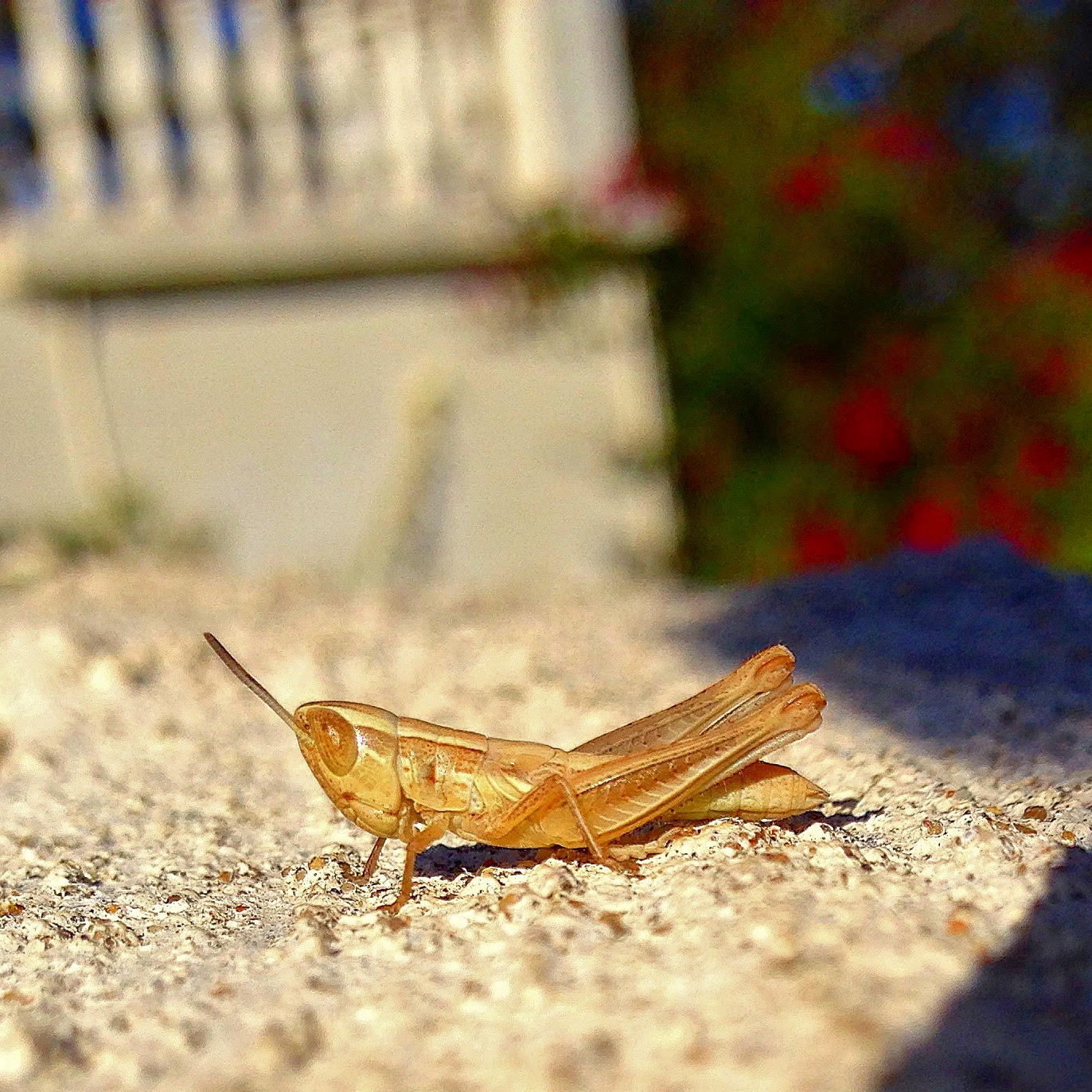 |
| Blue Skimmer Dragonfly Orthetrum caledonicum |
Location: Western Australia, South West
Season: Summer, December
Order: Odonata
Season: Summer, December
Order: Odonata
Suborder: Anisoptera
Family: Libellulidae
Genus: Orthetrum
Orthetrum caledonicum
Blue Skimmer Dragonfly is commonly found in Australia. It is powder blue in colour, hence the name Sky Blue Dragonfly. The fly's body has a waxy coating and when light passes through the colloidal wax, all light is absorbed but blue light is scattered by the particles, making the insect look blue (Tyndall Effect). The process of colour change is called Pruinescence.
 |
| Blue Skimmer Dragonfly with remnants of yellow still on the abdomen undergoing pruinescence |
In the two photos below, the dragonfly is yellow, which could be a young teneral male or a female.
 |
| Young Teneral Male or Female Blue Skimmer Dragonfly |
 |
| Young Teneral Male or Female Blue Skimmer Dragonfly |
When I first saw this yellow dragonfly which is actually a Blue Skimmer, I confused it with the Australian Emerald Dragonfly (and misquoted it on Instagram). The description and pictures in the field guides I read had stark similarities. Two things confirmed for me that these are Blue Skimmers. One, I actually saw the process of Pruinescence as demonstrated in the second photo. Two, I actually spotted an Australian Emerald Dragonfly! Please pardon the quality of the picture below, I must get a good shot next time. But the metallic green coloured markings on the abdomen can be seen. The eyes are bright greenish blue.
 |
| Australian Emerald Dragonfly Could be a Tau Emerald as T mark is not visible in the photo Hemicordulia australiae |
























